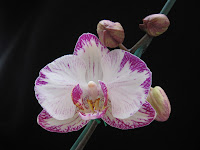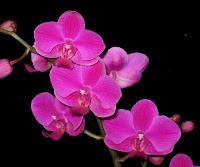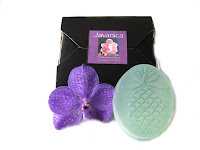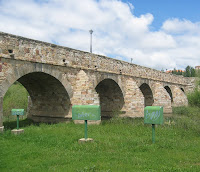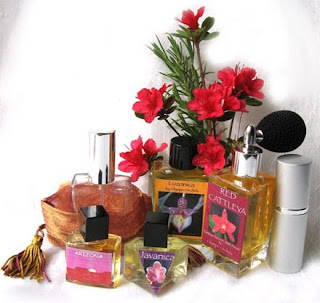
Amber is probably one of the most confusing terms in perfumery. It is used to refer to at least three completely different classes of scents, one of which is an accord (mixture) made of highly variable materials including benzoin, vanilla, labdanum, and a host of other things. The components of the “amber” accord can be either natural or synthetic. This accord in all its various guises is by far the most common “amber” in perfumery and is used as a base in a wide variety of perfumes, including orientals. I have formulated my own signature amber accord that I use alone when I'm craving a big dose of labdanum, or as a base in other perfumes. It seems that amber accords are often sold with the claim that they are the “essential oil of amber” even though the components have nothing to do with true amber.
“Amber” is also sometimes used to refer to ambergris, real or synthetic. My impression, from what I’ve read and from the perfumes with an ambergris note that I’ve sampled, is that ambergris has a salty, ocean-like, animalic scent that bears no resemblance to the amber accord. At some point I want to get my hands on some real, pure ambergris to try, but it’s not that easy to come by, especially on a limited budget, since it depends on sperm whales coughing it up and letting it age for a long time in the ocean before it washes up somewhere on a beach.
True amber, the one that we see in jewelry, is actually fossilized tree resin, sap secreted by plants millions of years ago and gradually petrified. Sometimes it contains insects or other inclusions. Scientists have even found bees with orchid pollen on their backs embedded in amber. Some time back I acquired a small vial of fossilized amber oil from Eden Botanicals, and have since gone on to purchase enough to use in formulating a perfume. According to their website, this oil is extracted from “Himalayan fossilized tree resin (35,000,000 years old) and found at an elevation of about 2,500 meters”. The oil is dark brown and extremely viscous. It has a distinctive smoky, slightly resinous scent that will make a unique perfume base. It’s a little like the ashes of a campfire and a little like the rosin that I remember my mother using on her violin bow. One of my current projects is to create a limited edition all-natural perfume using fossilized amber as the featured note.
The thought of wearing perfume that contains sap from long-extinct plants that grew in prehistoric times seems daunting until I think about the fact that prehistoric plant materials are burned every day in enormous quantities in petroleum products and coal. OK, so much for that mystique. I prefer to think of fossilized amber oil as a liquid jewel, the spirit of those ancient trees that shed their blood into the primordial ooze, where it turned to stone. I may call the perfume "Petrified Forest", but am open to suggestions.

